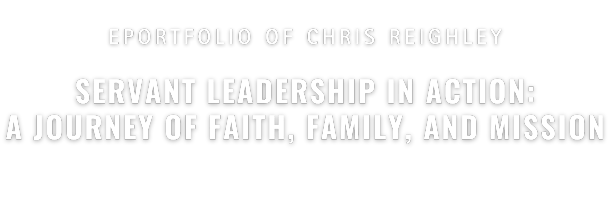This is Part 4 of the series What is a Biblical Worldview?
We’ve all heard the phrase, “If it ain’t broke, don’t fix it.” But what happens when it is broken? You call in the repairman! In theological terms, the brokenness we experience in our world today began with the fall of humanity, and the repairman is none other than God Himself. This post, part of our series on understanding a biblical worldview, delves into how the perfect creation God intended took a wrong turn, plunging us into sin and its consequences.
When we speak of the “Fall,” we refer to the pivotal moment in Genesis 3 when humanity, represented by Adam and Eve, chose to disobey God. This decision introduced sin into the world, affecting human nature, our relationships, and the entire created order. In this blog post, we’ll unpack what happened in Genesis 3, explore the far-reaching effects of the Fall, and consider a Divine Council perspective that broadens our understanding of these events.
Theological Insights
THE FALL AND ITS IMMEDIATE EFFECTS
Genesis 3:1-7 sets the stage for the Fall with the serpent’s temptation of Eve. The serpent, representing Satan, cleverly questions God’s command and entices Eve to eat from the Tree of the Knowledge of Good and Evil, the one tree God had forbidden.
“Now the serpent was more crafty than any beast of the field which Yahweh God had made. And he said to the woman, ‘Indeed, has God said, “You shall not eat from any tree of the garden”?’”
This act of disobedience was not merely a matter of dietary preference; it was a fundamental rebellion against God’s authority and goodness. Adam and Eve’s choice to eat the forbidden fruit represents a desire to be like God, knowing good and evil independently of Him. This pivotal moment resulted in several immediate effects:
- Spiritual Death: Adam and Eve experienced a separation from God, symbolized by their awareness of nakedness and subsequent hiding from God. Genesis 3:8-10illustrates the immediate guilt and shame that entered their consciousness.
- Broken Relationships: The harmony that once existed between man and woman, humanity and nature, and humans and God was shattered. Blame-shifting began as Adam pointed fingers at Eve Genesis 3:12, and Eve blamed the serpent Genesis 3:13.
- Cursed Creation: The ground itself was cursed because of humanity’s sin, leading to toil and struggle Genesis 3:17-19. The creation that was once “very good” became subject to futility and decay Romans 8:20-22.
- Physical Death: Though Adam and Eve did not die immediately, mortality became their reality, as God stated, “For you are dust, and to dust you shall return” Genesis 3:19.
THE DIVINE COUNCIL VIEWPOINT
A fascinating dimension of the Fall involves the Divine Council, a concept explored by theologian Michael S. Heiser in “The Unseen Realm.” The Divine Council refers to the heavenly host, a group of spiritual beings who participate in God’s governance of the cosmos. In Genesis 3, we see the serpent as a council member who rebels against God’s order, introducing chaos and disorder into creation.
Psalm 82:1 provides insight into this heavenly council:
“God takes His stand in His own congregation; He judges in the midst of the rulers.”
In this context, the Fall represents not just human rebellion but also a cosmic conflict involving spiritual beings. The serpent’s deception is part of a broader narrative where spiritual rebellion parallels human rebellion, and both are deeply intertwined.
This perspective emphasizes the cosmic scope of the Fall and highlights the spiritual warfare that continues to affect the world. Understanding this interplay is crucial for grasping the full impact of sin and the ongoing struggle between good and evil.
IMPACT ON HUMAN NATURE AND RELATIONSHIPS
The Fall’s impact on human nature is profound. Our inclination toward sin, often referred to as “original sin,” is rooted in this initial act of rebellion. The Apostle Paul captures this reality in Romans 5:12:
“Therefore, just as through one man sin entered into the world, and death through sin, and so death spread to all men, because all sinned.”
This sin nature affects every aspect of human existence. Our relationships suffer from selfishness and pride, and our societies reflect brokenness in systemic injustice, violence, and corruption. The pervasive nature of sin means that no part of human life is untouched by its consequences.
The Fall also distorted gender relationships. Genesis 3:16 outlines the relational struggles between men and women as a result of sin:
“To the woman He said, ‘I will greatly multiply Your pain in childbirth, In pain you will bring forth children; Yet your desire will be for your husband, And he will rule over you.’”
Here, we see the introduction of power struggles and pain into what was intended to be a harmonious partnership. The Fall thus affects both personal and societal dimensions, requiring a comprehensive understanding of its impact on a biblical worldview.
IMPACT ON THE CREATED ORDER
Beyond human relationships, the Fall extends its reach to the entire created order. The natural world, once a harmonious reflection of God’s creativity, now bears the scars of sin. Thorns and thistles become symbols of creation’s frustration Genesis 3:18.
Paul elaborates on this in Romans 8:20-22, describing how creation itself eagerly awaits redemption:
“For the creation was subjected to futility, not willingly, but because of Him who subjected it, in hope that the creation itself also will be set free from its slavery to corruption into the freedom of the glory of the children of God.”
This passage reveals the hope that persists amidst the brokenness. Even as creation groans, it anticipates the restoration that God promises through His redemptive plan.
Practical Applications
RECOGNIZING OUR NEED FOR REDEMPTION
Understanding the Fall helps us recognize our profound need for redemption. Without acknowledging our sinful nature and its consequences, we cannot fully grasp the necessity of Christ’s work on the cross. By facing the reality of sin, we open ourselves to the transformative power of God’s grace.
CULTIVATING HEALTHY RELATIONSHIPS
Acknowledging the effects of the Fall encourages us to actively pursue reconciliation and healing in our relationships. Whether in marriage, friendships, or community, understanding the roots of conflict helps us seek forgiveness and extend grace to others.
ENGAGING IN CREATION CARE
Recognizing the impact of the Fall on creation calls us to engage in responsible stewardship of the environment. As we care for the earth, we participate in God’s restorative work and reflect His heart for creation.
UNDERSTANDING SPIRITUAL WARFARE
The Divine Council perspective reminds us that spiritual warfare is a reality. As believers, we are called to be vigilant and equipped with the armor of God Ephesians 6:10-18, recognizing that our struggle is not merely against flesh and blood.
Conclusion
The Fall represents a significant turning point in God’s grand narrative, introducing sin and its devastating effects into the world. By understanding the theological, relational, and cosmic dimensions of the Fall, we gain a clearer picture of the brokenness that permeates our existence. Yet, amidst this brokenness, God’s redemptive plan shines brightly, offering hope and restoration through Jesus Christ.
As we reflect on the Fall and its consequences, let us embrace the biblical worldview that acknowledges the reality of sin while celebrating the promise of redemption. Through faith and action, we can participate in God’s work of restoring all things to His original design, living out our calling as His ambassadors in a fallen world.
References
- Heiser, Michael S. (2015). The Unseen Realm: Recovering the Supernatural Worldview of the Bible. Lexham Press.
- Holy Bible, Legacy Standard Bible. (2021).
- Colson, Charles. (1999). How Now Shall We Live. Tyndale House.
- Phillips, W. Gary, Brown, William E, Stonestreet, John. (2008). Making Sense of the World. Salem, WI: Sheffield.
- Watkin, Christopher. (2022). Biblical Critical Theory: How the Bible’s Unfolding Story Makes Sense of Modern Life and Culture.
This exploration into the Fall lays the groundwork for understanding the human condition and our need for God’s grace. Stay tuned for the next installment in our series, where we’ll delve into the redemptive story of God’s plan to rescue and restore His creation.




